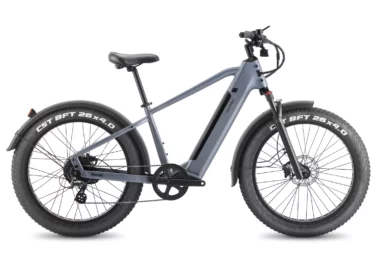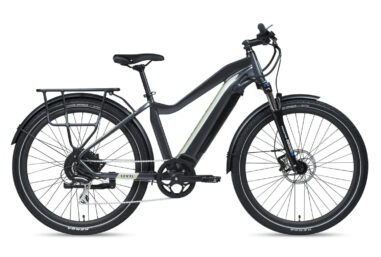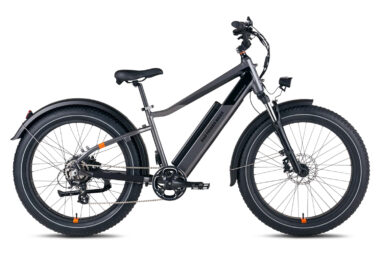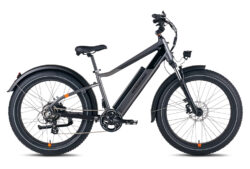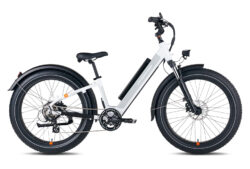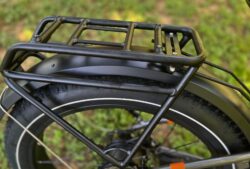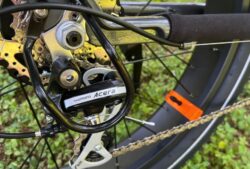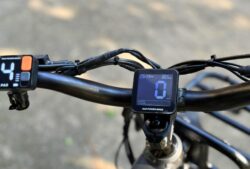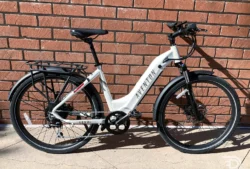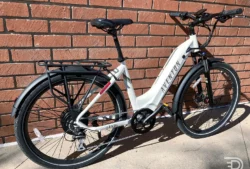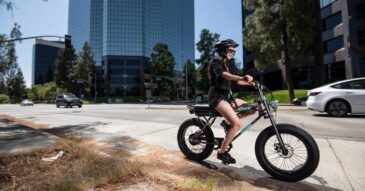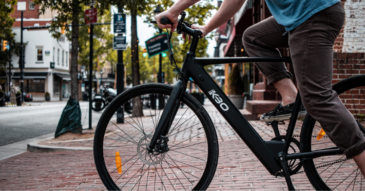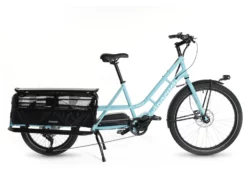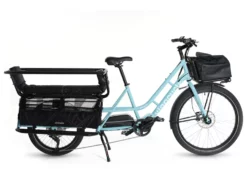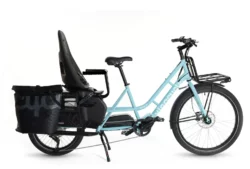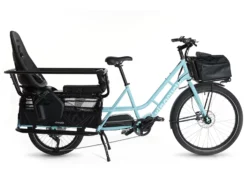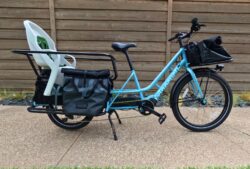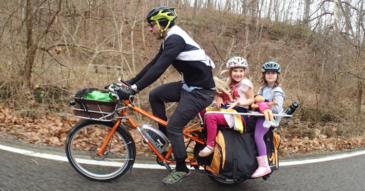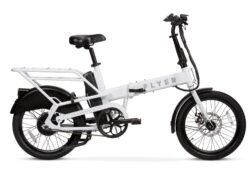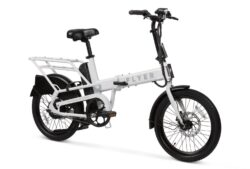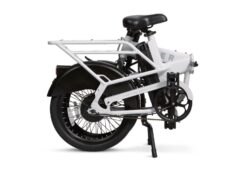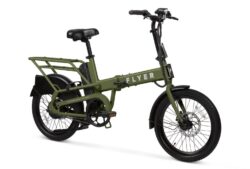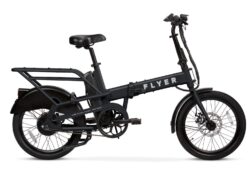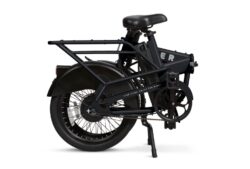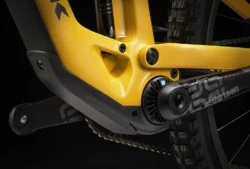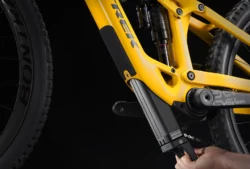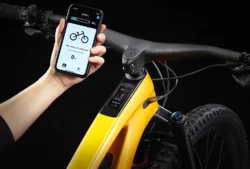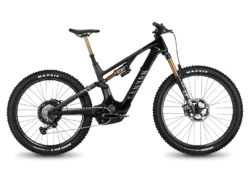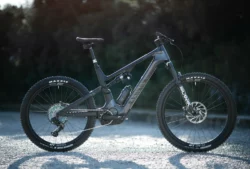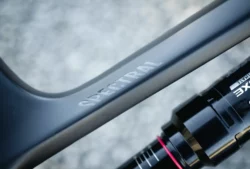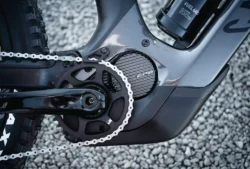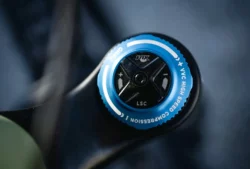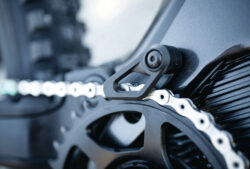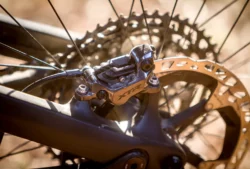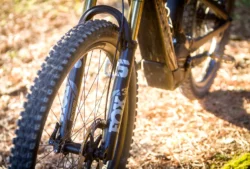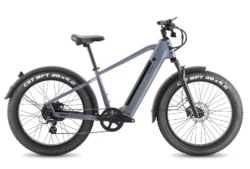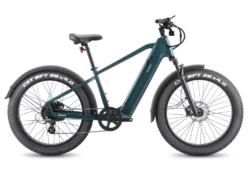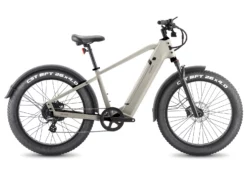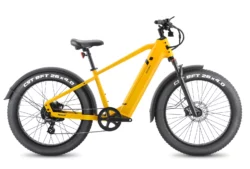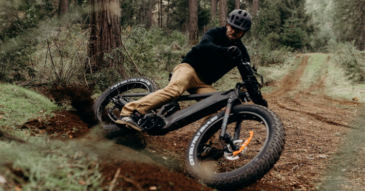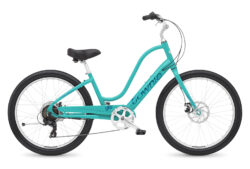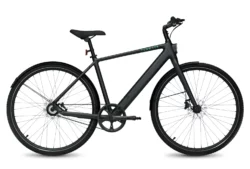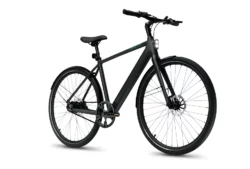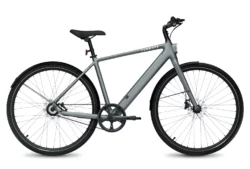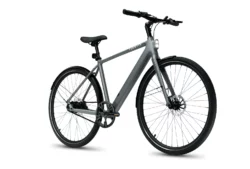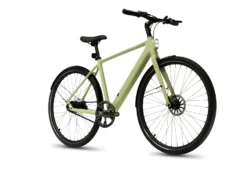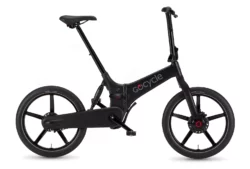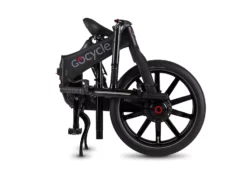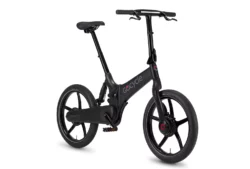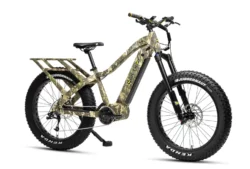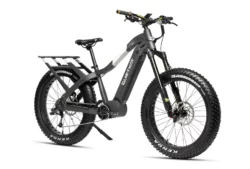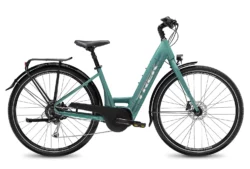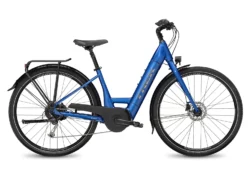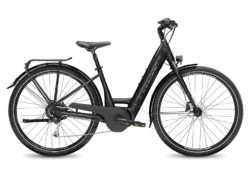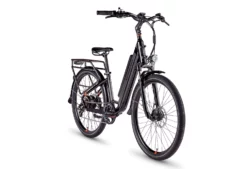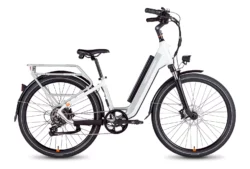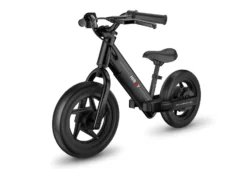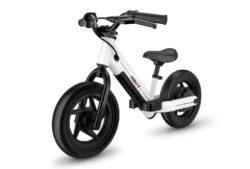How We Review E-Bikes
Our goal is to provide you with the most accurate information possible, which is why we actually get out on the road (or trail, depending on the type of bike) and test these e-bikes. Standardized evaluations like our hill climb and range tests provide unbiased data about the bike’s performance. We then use that data to rate each product on a universal 5-star scale.
If, for some reason, we can’t get our hands on a physical model, our team of researchers steps in and scours the internet for the most reliable information. And they aren’t just any old researchers; they’re industry experts with years of e-bike riding experience.
Learn more about our team and our product research methodology.
Best E-Bikes You Can Buy Now
- Best All-Terrain E-Bike: RadRover 6 Plus
- Best Commuter E-Bike: Aventon Level.2
- Best Cargo E-Bike: Xtracycle Swoop
- Best Folding Cargo E-Bike: Flyer™ Folding Cargo
- Best Lightweight E-MTB: Trek Fuel EXe
- Best E-MTB: Canyon Spectral:ON
- Best Fat-Tire E-Bike: Velotric Nomad 1
- Best Electric Beach Cruiser: Townie Go! 7D
- Best E-Bike for Cities: Tenways CGO600 Pro
- Best Folding E-Bike: Gocycle G4i
- Best E-Bike for Hunting: QuietKat Apex Pro
- Best Step-Thru E-Bike: Trek Verve+ 3 Lowstep
- Best Touring E-Bike: Cannondale Tesoro Neo X
- Best E-Bike for Seniors: RadCity 5 Plus
- Best E-Bike for Kids: Hiboy BK1
Best All-Terrain E-Bike
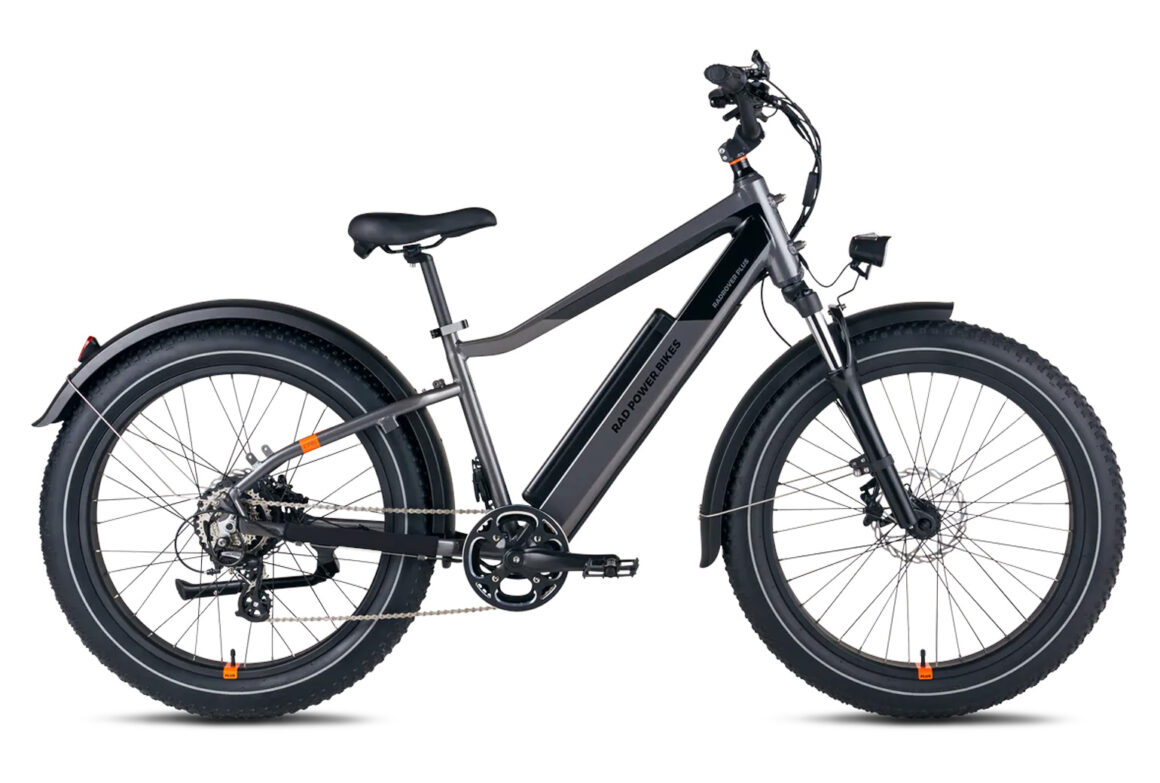
RadRover 6 Plus
What We Like
- Affordable price
- Cushy suspension and ride
- Impressive 750W motor
- Heavy duty sturdy cargo rack
What We Don't Like
- Hefty weight (over 70 lbs)
- Some diminished power due to weight
- Average range — nothing extraordinary
Overview
Originally released in 2021 by Rad Power Bikes, the RadRover 6 Plus remains one of the best all-terrain electric bikes on the market today. But we think it’s better called an adventure commuter bike since it performs well on gravel trails and bumpy city roads.
This American-made bike offers the perfect combination of sturdiness and comfort, thanks to its big frame, 4″ fat tires, suspension fork, and heavy-duty rack. Its 750W rear hub motor also packs a big punch when required, helping you tackle even the steepest of hills — even with a full load on throttle alone.
However, the powerful motor guzzles up some of the battery, limiting the range to about 45 miles. The weight of the bike also diminishes the power a bit, making the pedal assist unnoticeable on lower levels.
Bottom Line
With its affordable price and great features, the RadRover 6 Plus is definitely one for you if you don’t want to stick just to paved roads. It does have a few inefficiencies with the weight and range, but a realistic 40+-mile run on mixed terrain isn’t a dealbreaker.
Rad Power RadExpand 5

Rad Power Bikes’ RadExpand 5 is a folding electric bike version of the RadRover. It, too, comes with 4” fat tires, a throttle, a comfortable saddle, and a powerful rear hub motor ideal for an all-terrain e-bike. Unlike the heavyweight beast above that might just fit in the back of a truck, the RadExpand can fold down and sit in the space of a large trunk.
Another aspect we like about the RadExpand is the low-step design, which is practical for seniors, individuals with mobility issues, or those who wear dresses/skirts while riding.
Be The First To Know
Best Commuter E-Bike
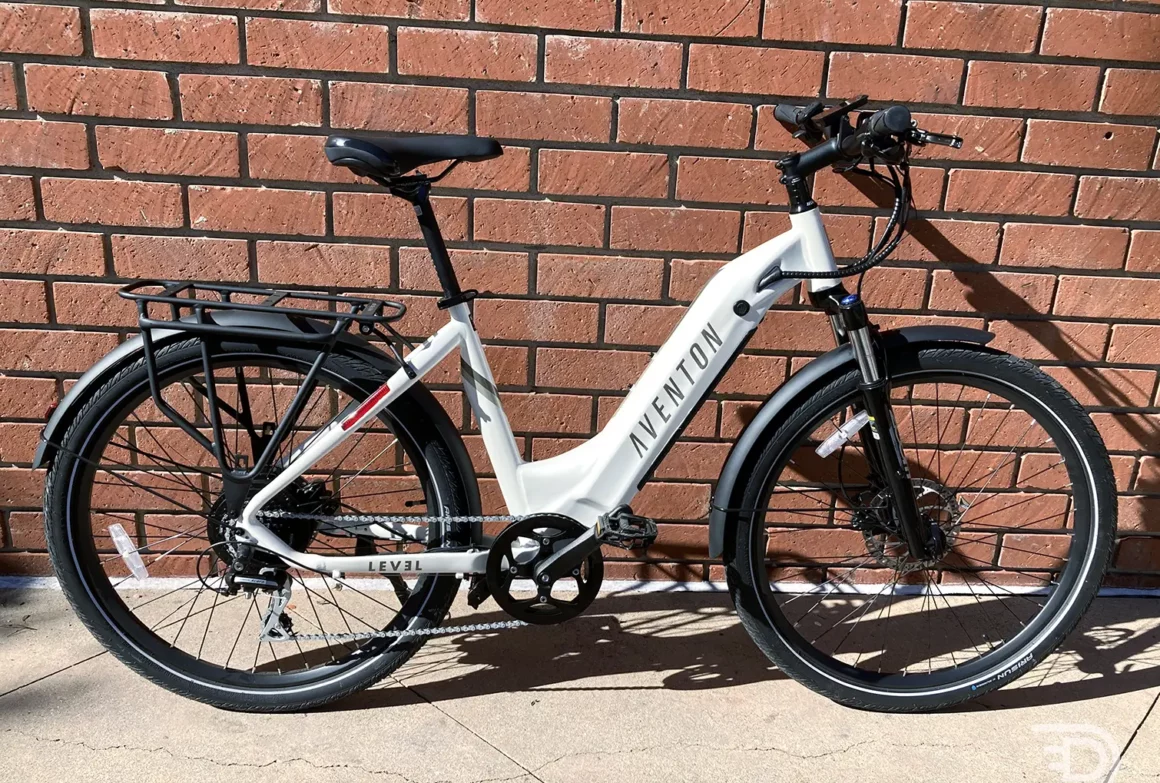
Aventon Level.2
What we like
- Torque-sensing system
- Frame-integrated brake lights
- Customizable max assist options
- Reasonable price
What we don't like
- Weighs over 60 lbs
- Mediocre range
Overview
The Aventon Level.2 is Aventon’s second generation of top-end city/commuter e-bikes, and this most recent model really steps it up. It comes programmed as a Class 2 e-bike, but you can customize the maximum assist features to accommodate a Class 1 or 3 status — or make it an out-of-class e-bike with the throttle and maximum pedal assist.
The new torque-sensing system enhances the PAS, offering a more sophisticated and natural feeling than the original Level e-bike. On top of those features, the Aventon Level.2 includes accessories and an impressive suspension fork.
That said, this e-bike is fairly heavy at 62 lbs. The range is also unimpressive, topping out at 42 miles — or less if you depend on the throttle. And while we give Aventon props for sleekly integrating the battery and lights, the wires could use some tidying up.
Bottom Line
The Aventon Level.2 comes with a bunch of great features — like a torque-sensing system and thumb throttle — at a reasonable price. Even with the range topping out around 40 miles, that’s typically more than enough for most commutes.
Trek Allant+ 8S Stagger
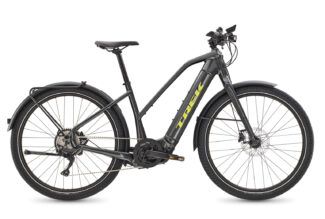
As commuter electric bikes go, the Trek Allant+ 8S Stagger has a lot to offer. The 625Wh battery offers a great range, and the powerful Bosch Performance Speed mid-drive motor kicks like a mule. Capable of 28 mph, this Class 3 e-bike offers high-speed, long-range commuting.
Another perk is the COBI.Bike app that turns your smartphone into a bike controller where you can view stats like speed and distance. Plus, the e-bike can even charge your phone while you ride.
Need More Options?
Best Cargo E-Bike
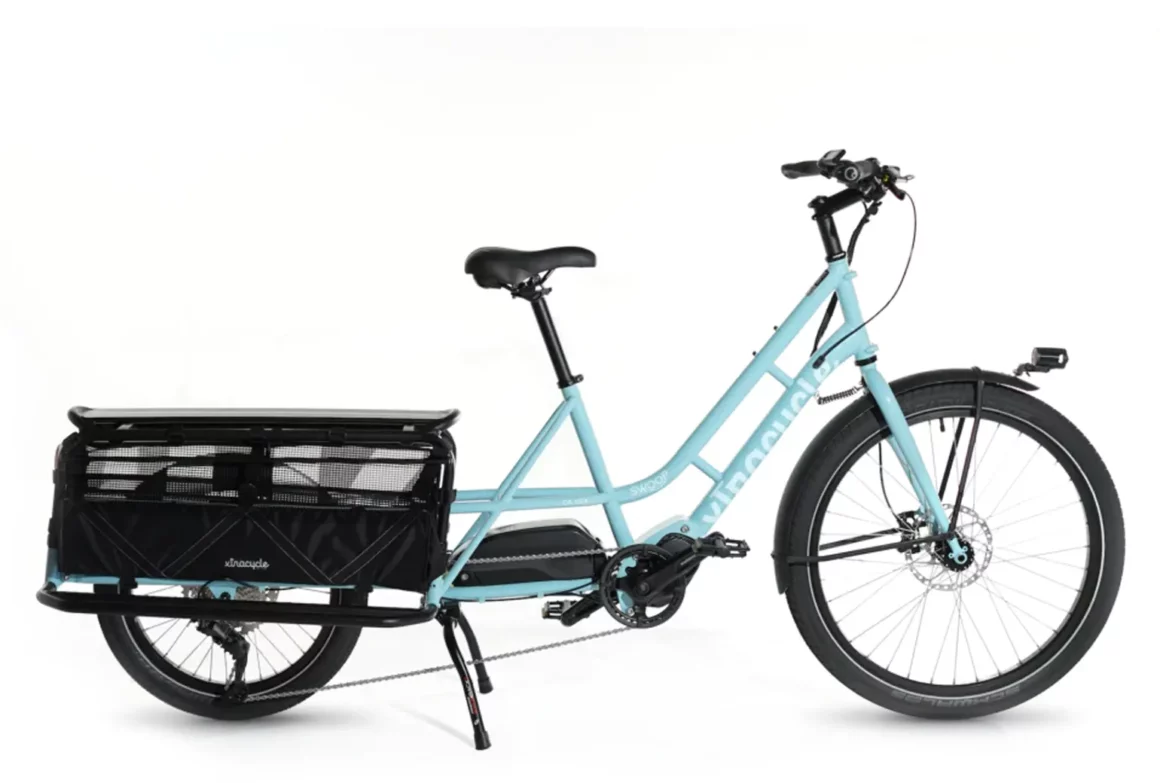
Xtracycle Swoop
What We Like
- Thoughtfully designed to grow with your family
- Carries up to 470 lbs
- Sturdy yet lightweight construction
- High-quality components for extended durability
What We Don't Like
- High price tag may push people away
- Long charge time at 10.2 hours for a full charge
Overview
The Xtracycle Swoop is the perfect alternative to a car that is designed to adapt and grow alongside your family’s needs. Although it has a hefty price tag, it is essential to understand that this is not just a purchase but a long-term investment that guarantees to prove its worth over time. The Swoop was designed to grow with your family.
The Swoop’s system pairs the Shimano STEPS EP8 mid-drive motor with a 630Wh externally mounted battery for pedal assist speeds up to 20 mph. The 60-mile range is more than enough to handle most daily round trips, from errands and delivery jobs to kid drop-offs/pick-ups.
Xtracycle doesn’t cut corners on durability, either. You get high-end mountain bike-level components, powerful Tektro hydraulic disc brakes, and unlimited cargo configurations. That’s why the $5,000 price tag seems more than fair — especially considering the savings you’ll enjoy from ditching your car.
Bottom Line
One cannot help but notice the impeccable attention to detail that has gone into the design of the Swoop. Every aspect of this e-bike has been carefully crafted with high-end components that exude quality and dependability. It’s clear that this bike was not just created to meet standards, but rather to surpass them.
Lectric XPedition Cargo
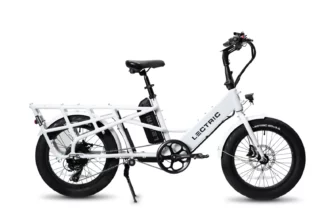
Lectric is a well-established brand known for its solid and reliable machines, and the Lectric Xpedition Cargo is no exception. It does what $5,000+ cargo e-bikes can do — but at a fraction of the cost.
For under $2,000, you get an e-bike capable of carrying up to 450 lbs of rider and cargo for over 100 miles. That’s plenty of range to complete a full day of deliveries or errands, making this bike a game-changer in the cargo e-bike niche.
Need More Options?
Best Folding Cargo E-Bike
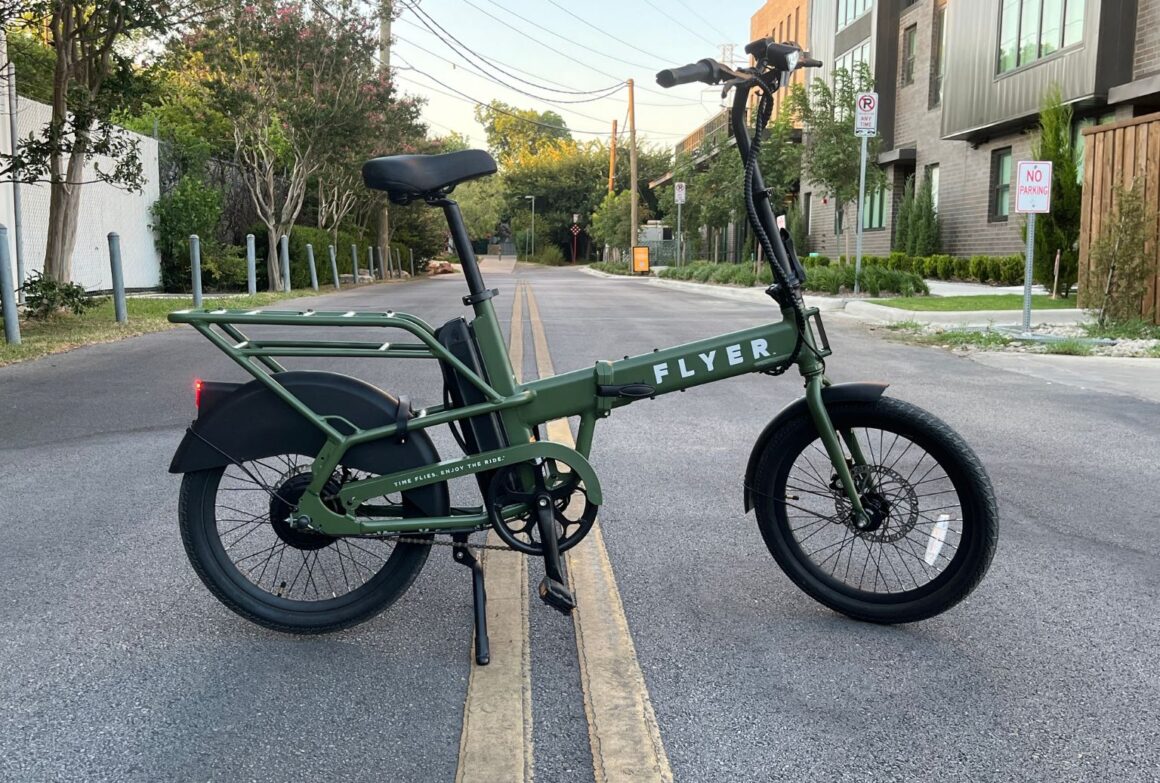
Flyer™ Folding Cargo E-Bike
What We Like
- Lightweight but sturdy frame
- Compact size (35.5″ x 22″ x 31.5″)
- Rear rack that holds up to 80 lbs
- Accommodates varying rider height (4' 11"-6' 4")
- Throttle for moderate hills
What We Don't Like
- 350W motor — could use a little more juice
- Not ideal for riding steep hills or mountains
Overview
The Flyer™ Folding Cargo electric bike is a product of Radio Flyer, a company known for crafting classic wagons. Surprisingly, they have created an exceptional e-bike that lives up to the company’s high standards.
The Flyer™ Folding Cargo is suitable for both city commuters and adventure enthusiasts. The compact size means it fits almost anywhere, from tiny apartments to your car’s trunk. And the compactness doesn’t affect durability. This e-bike has a sturdy yet lightweight aluminum frame and an integrated rear rack that can hold up to 80 lbs.
The one major drawback is that there are no gears to shift into on steep climbs, so this Folding Cargo e-bike isn’t going to be that hill climber you’d expect from a geared electric bike. If you live in a city with steep hills or plan on riding in the mountains, this probably isn’t for you.
Bottom Line
The Flyer™ Folding Cargo is a versatile and practical bike that is perfect for both city and outdoor adventures — unless you live in an area with a lot of steep hills.
Lectric XP 3.0

The Lectric XP 3.0 has a lot of the same great features as the Flyer™ Folding Cargo: It’s great for hauling heavy cargo on a durable, compact folding frame. The Lectric XP 3.0 loses points because of the extra weight but makes up for it with the gears. You be the judge, though!
Best Lightweight E-MTB
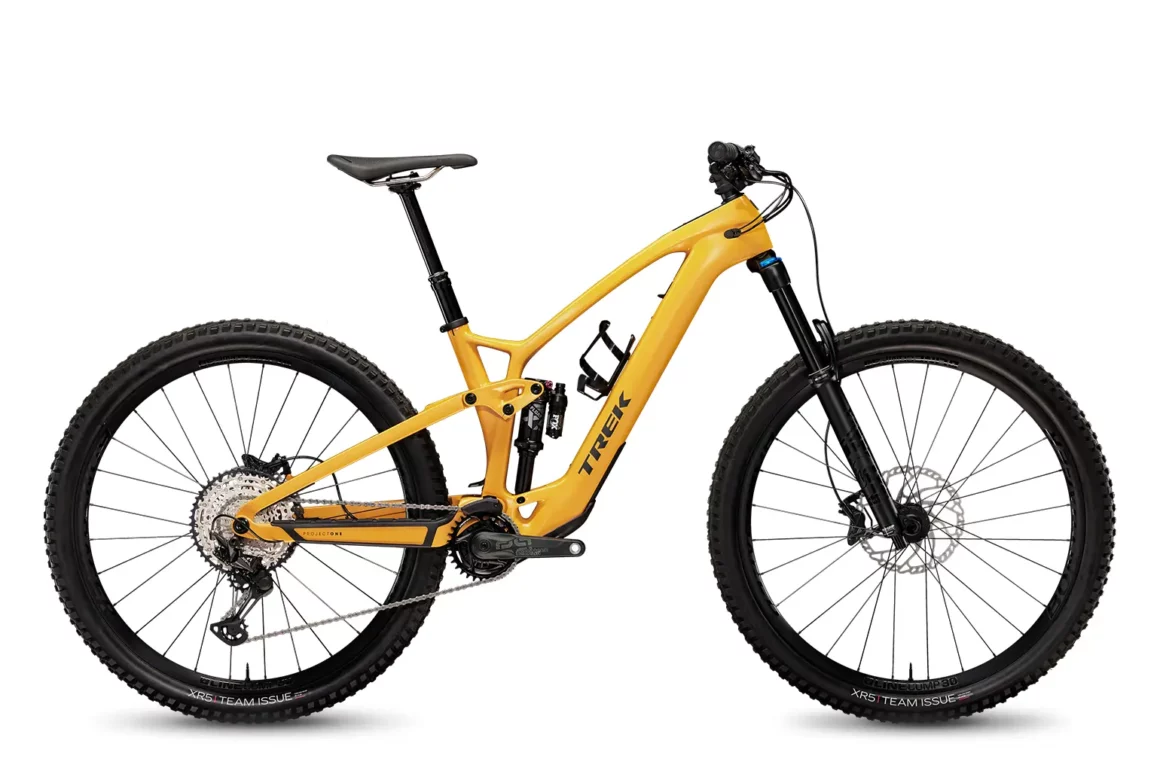
Trek Fuel EXe 9.9 XX1 AXS
What We Like
- Extremely lightweight
- Ultimate comfort and maneuverability
- High-quality components and impressive durability
- Limitless ranging with motor off
What We Don't Like
- Extremely high price – might put it out of reach for casual riders
Overview
The Fuel EXe rides so smoothly you might question whether it’s actually an electric bike. And that’s just the point. The e-mountain bike (eMTB) is both lightweight and durable but not meant to be super powerful. It has just enough power to give you some support on hard climbs while still performing like a normal MTB.
This 40-lb bike responds to your every movement and offers exceptional comfort. Thanks to the accompanying app, you can adjust your exact position and suspension. You also get complete control of the steering with a 64.8-degree head angle for direct cornering.
While marked at 40 miles, the range can be unlimited if you turn off the motor — which is quite impressive. The only downside is the price, which totals nearly $14,000.
Bottom Line
The FuelEXe is a top-of-the-range e-mountain bike that comes with an equally high-range price tag. As a result, it’s the ideal bike for dedicated professional athletes willing to invest in a high-performance electric mountain bike.
Trek Powerfly 4 Gen 4
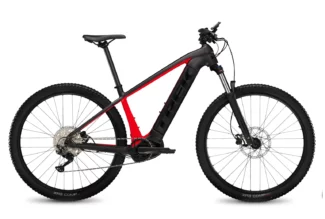
While not a competition machine, the Trek Powerfly 4 has everything you need to tackle fun cross-country rides and explore state park footpaths and trails – all at a much more affordable price.
It’s ideal as a first electric mountain bike, thanks to its tried and tested components. But it still offers plenty of torque, and the 10-speed transmission with an 11-46t cassette will help you ride economically.
Best E-MTB
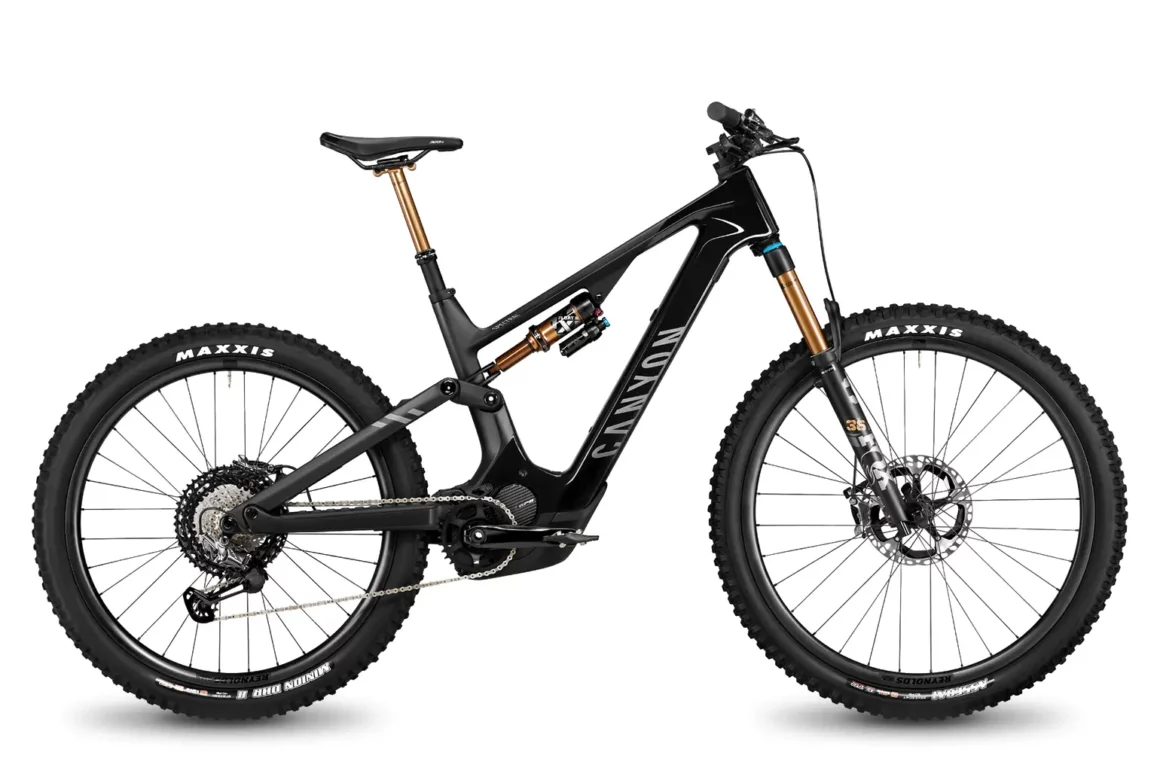
Canyon Spectral:ON
Pros
- Exceptional range for an eMTB
- Hardly looks like an electric bike
- 85NM of torque for steep climbs
- High-end suspension for ultimate comfort
What We Don't Like
- High-end price
Overview
Canyon has pulled out all the stops for its Spectral:ON model, which comes with a lightweight reserve carbon form and a 900wh battery (or 720wh, depending on the frame size). Add to that an X2 rear shock and a Factory Float 36 front fork, and you have a great combination of power and comfort.
One of the best features is the extended range, which tops off at about 40 miles. That’s hard to beat when it comes to eMTBs! The style is also worth mentioning since Canyon was able to fit a large battery into a sleek frame so successfully that you can hardly tell this is an electric bike.
The Spectral:ON is a high-end bike, so it only makes sense that it comes with a high-end price tag. Just keep in mind that a bike of this caliber also requires regular maintenance to maintain its quality and performance.
Bottom Line
The 2023 Canyon Spectral:ON is a new and improved model, and we’re huge fans of the range, power, and comfort. The $9,000 price might seem like a lot, but it’s worth it for the performance. We feel it’s one of the best you’ll find in 2024.
Trek Rail 5 Gen 2

The Trek Rail 5 Gen 2 is a classic heavyweight trail shredding machine ideal for downhill or cross-country riding. It comes out slightly ahead of the Spectral:ON in terms of power, thanks to its Bosch Performance CX motor.
The range for this electric mountain bike is much lower at 29 miles, but you can push it to 40 or 50 if you only use it to climb back up those steep hills.
Best Fat-Tire E-Bike
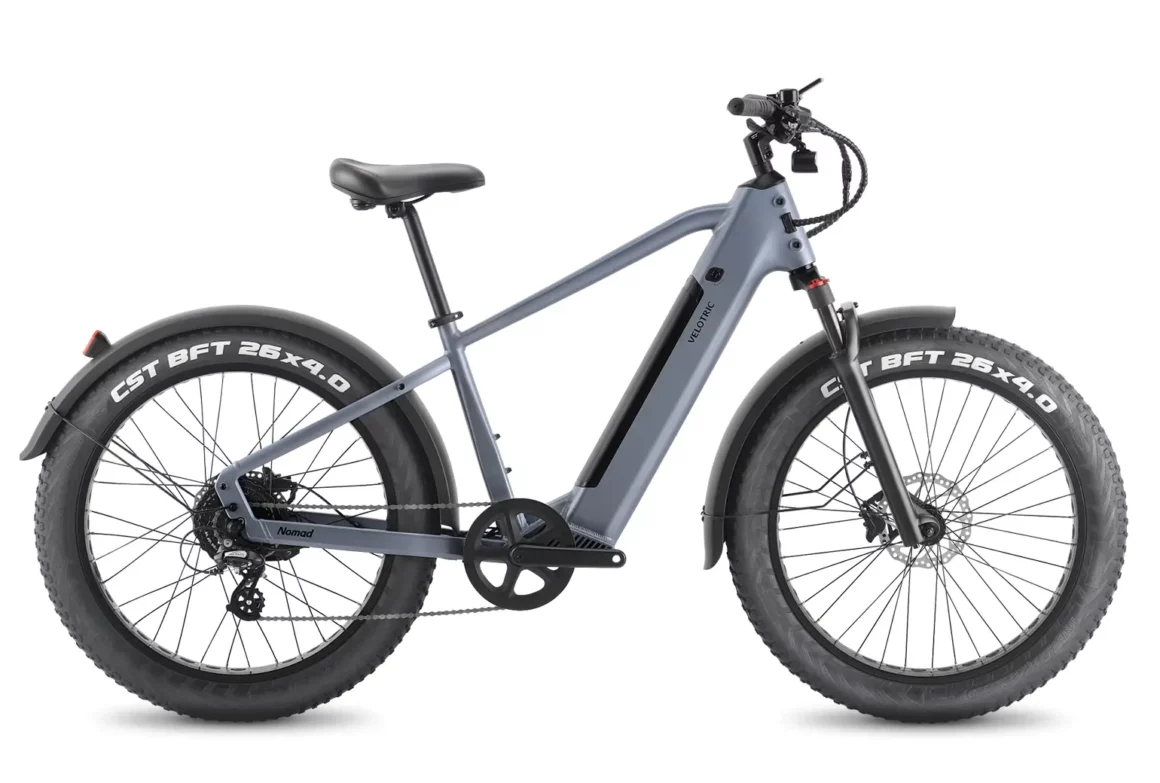
Velotric Nomad 1
What We Like
- The powerful 750W motor and 75nm of torque help on steep hills
- The 440 lb payload capacity means this can haul a ton of cargo.
- The wide tires, 100mm of travel from the front fork, and comfort saddle provide a comfortable riding experience.
- The riding position is slightly leaned forward but not overly aggressive.
- Step-through model is available for riders with mobility concerns
- Diverse color options
What We Don't Like
- Lesser-known components may affect long-term maintenance
- Warranty coverage on battery and components is relatively short
Overview of the Velotric Nomad 1
The Velotric Nomad 1 is an awesome electric bike that’s perfect for riding around on any terrain, but it’s not just for rugged outdoorsy types. It’s actually really practical and great for commuting thanks to its sturdy frame, comfortable 100mm front suspension, and fenders. Plus, you can easily add a rack to carry your stuff. And get this – it can hold up to 440 lbs, so it’s great for all kinds of riders! The Nomad 1 receives our vote for the best fat-tire e-bike out there, and it’s perfect for urban adventurers.
Just be mindful of the speed limits, because it can go pretty fast when you change the settings and unlock an upper limit of 25mph! Now this does take it out of the Class 2 classification, but we are seeing that as an option with many electric bikes on the market these days.
Bottom Line
The bottom line is that the Nomad 1 is one of our favorite fat-tire electric bikes because of the versatility it offers. Ride it on the city streets in Class 2 mode, then hop onto the trails for some gravely good times. You won’t miss a beat and you won’t empty your wallet because the Nomad 1 costs under $2,000. Good times shouldn’t cost too much.
Aventon Aventure

The Aventon Aventure is a favorite thanks to its versatility and affordable price. Like the Nomad 1, the Aventon Aventure isn’t ideal for intensive off-roading, but it works well for trail, beach, and urban riding.
It is right on par with the Nomad 1 as well when it comes to range and component quality. You’re looking at very similar electric bikes, so either one is a great pick for your all-road riding needs. The Nomad 1 is slightly lighter and to be honest, comes in better color options. Style isn’t everything, but when two e-bikes are tied in performance, it does act as the tie breaker.
Need More Fat-Tire E-Bike Options?
Best Electric Beach Cruiser
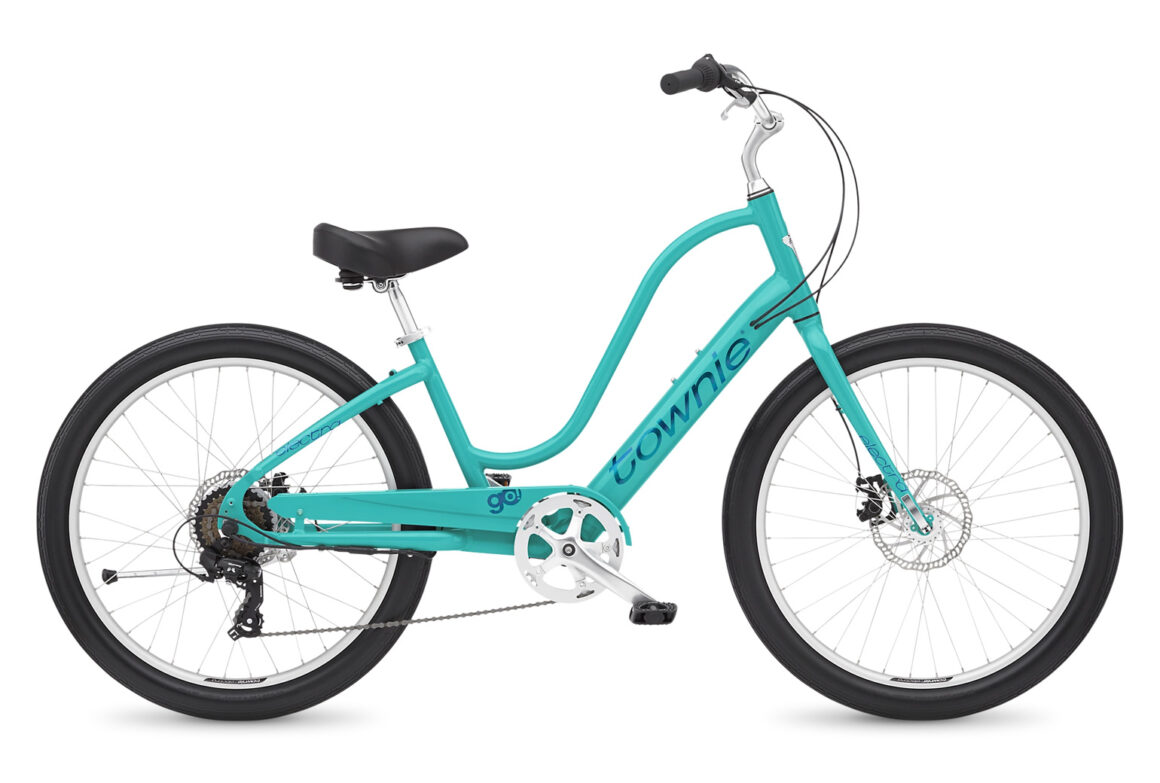
Townie Go! 7D Step-Thru
What We Like
- Affordable price
- Fun style and colors
- Lightweight frame
- Includes Shimano Tourney 7-speed system
- Easy-to-mount frame
What We Don't Like
- Doesn't come with accessories
- Low-capacity battery
Overview
An electric beach cruiser should be the definition of fun, free, and stylish — and that’s just what the Trek Townie Go! 7D is. This lightweight e-bike comes in at just 44 lbs and sports a casual style with the sweep-back handlebars, fun colors, and curved frame.
The performance is also impressive. This beach cruiser has just a 250W motor but can reach 20 mph and last up to 40 miles. That’s admirable for a bike that costs less than $2,000 — and perfect for fun cruises around town.
One drawback is the low-capacity 250Wh battery, but it fits the bike’s design and purpose, so we can’t complain too much! You’ll also have to purchase accessories like a rack and lights.
Bottom Line
The Trek Townie Go! 7D is a fun and practical cruiser that offers an impressive performance, especially considering the low price. It has a low-capacity battery, but it’s more than enough to get you around town.
Nakto Santa Monica Fat Tire
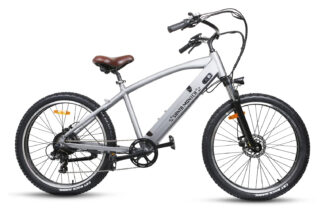
With its timeless style, the Nakto Santa Monica Fat Tire won’t look out of place cruising beaches and roads alike. Thanks to the fat tires, this bike is also a comfortable ride on most terrains.
The 500W rear hub motor is more powerful than the one on the Trek Townie Go! 7D, but it only only reaches 19 mph and weighs much more (72 lbs).
Best Electric Bike for the City
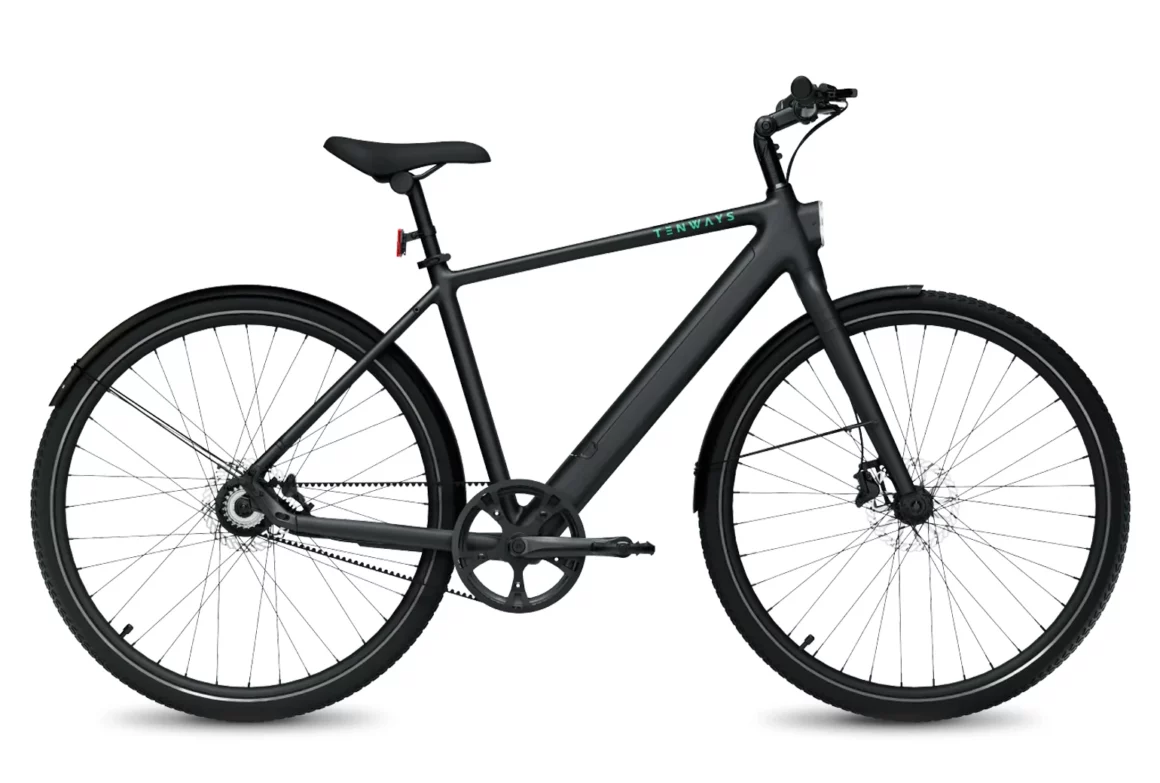
Tenways CGO600 Pro
What We Like
- Incredibly lightweight at 35.2 lbs
- Maintenance-free Gates Carbon CDX belt drive
- Impressive 52-mile range with efficient battery use
- Sleek and minimalist design that doesn't scream e-bike
- Ultra-smooth ride feel
What We Don't Like
- Not a powerhouse for steep hill climbs
- Focused on pedal-assist, may not suit those wanting more motor reliance
Overview
The Tenways CGO 600 Pro e-bike is seriously impressive when it comes to modern design, being one of the lightest e-bikes on the market. We found the aerospace aluminum frame to be sturdy and stiff like a steel-frame fixie, yet it’s sleek and lightweight. The Gates Carbon CDX belt drive promises a maintenance-free experience, which is invaluable when riding in mixed weather conditions.
With a clutched rear-hub motor and a torque sensor, you can expect a range of 52 miles. It’s perfect for city commuting, with an integrated headlight for visibility and safety, as well as full coverage fenders to keep the elements off of your clothes. The CGO600 Pro easily maneuvers through crowded streets, and is easily shouldered when encountering stairs thanks to its light weight of only 35.2 lbs.
Bottom Line
Overall, the Tenways CGO 600 Pro is a fantastic choice for anyone looking for a light hassle-free city electric bike. The added perk is that Tenways doesn’t charge an arm and a leg for their e-bikes. It’s ideal for commuters who want an affordable, easy-to-maintain, lightweight, whisper-quiet ride. You won’t find a better e-bike for your city rides.
Trek FX+ 2
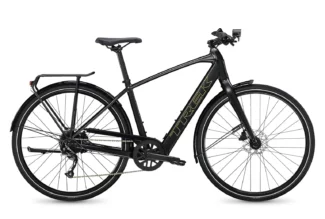
The Trek FX+ 2 and Tenways CGO600 Pro are priced similarly, but they differ in weight and range. The FX+ 2 weighs 40 lbs., which is 5 lbs. more than the CGO600 Pro. However, the CGO600 Pro can travel about 18 miles further per charge, than the FX+ 2. Even though there is a significant difference in range, the Trek FX+ 2 is still a good option for short commutes as it can cover up to 35 miles per charge.
Best Folding E-Bike
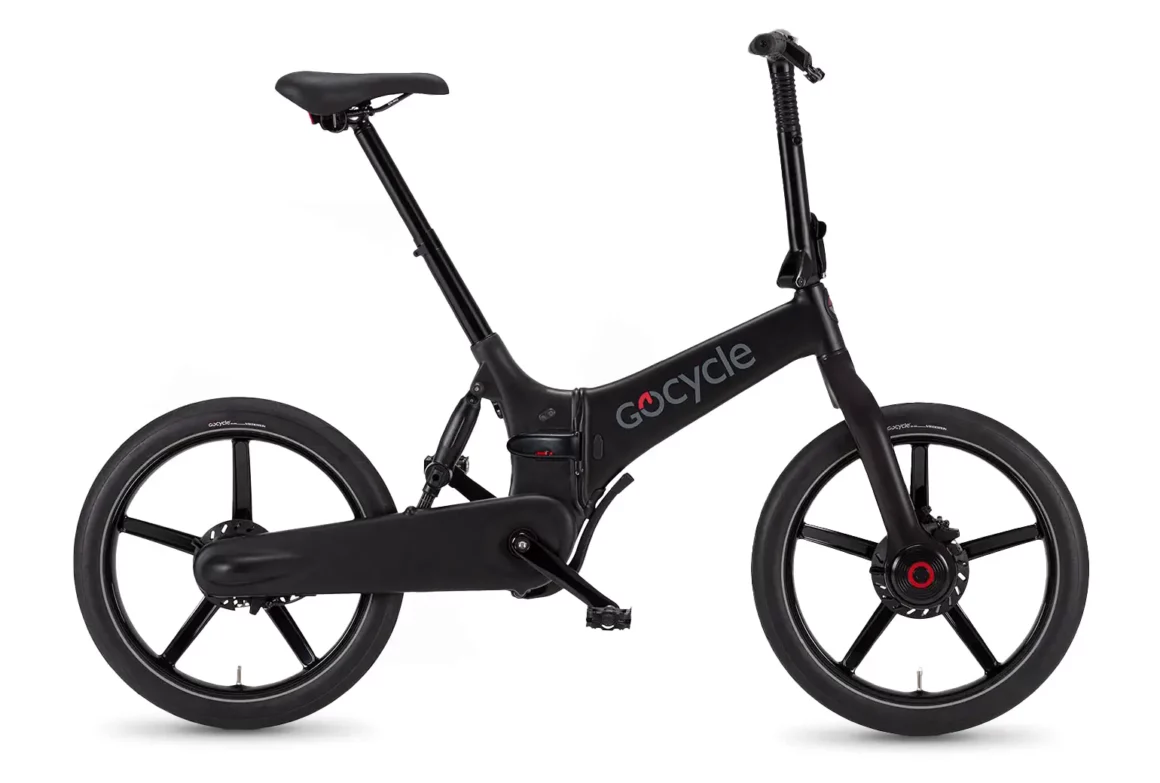
Gocycle G4i
What We Like
- Ultra-lightweight
- Predictive automatic transmission
- Impressive 50-mile range
- Mid-suspension system under seatpost
- Rolls when folded
What We Don't Like
- Pedal assist only (no throttle)
- A little pricey
Overview
The 2021 Gocycle G4i came to impress with its streamlined appearance and lightweight materials. Even two years later, it stands as one of the best folding e-bikes.
The hydroformed aluminum fork, carbon frame, and magnesium rear — plus the battery — have a combined weight of less than 38 lbs. That makes it easy to fold and transport, even for the smallest rider. As an added bonus, the bike still rolls when folded, meaning you don’t have to pick it up and carry it everywhere.
Because this is a Class 1 e-bike, you don’t get any throttle. But the 500W motor is more than powerful enough to carry you and this lightweight bike at top speeds (20 mph). Keep in mind, though, that you will end up paying more for such an ultra-lightweight bike with a powerful motor.
Bottom Line
The Gocycle is a powerful, utility-focused bike that provides just about everything you could want in a folding e-bike. However, these perks come with a slightly higher price tag.
Aventon Sinch.2
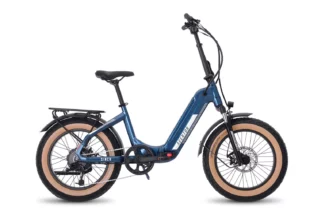
The Aventon Sinch.2 offers the two things the Gocycle G4i doesn’t: a much more affordable price and a throttle. The motor is comparable at 500W, and you can even upgrade the Aventon Sinch to a Class 3 bike if desired.
However, the bike weighs nearly twice as much which can make lifting and carrying a challenge. So, the decision really comes down to what you’re looking for in a folding e-bike.
Best E-Bike for Hunting
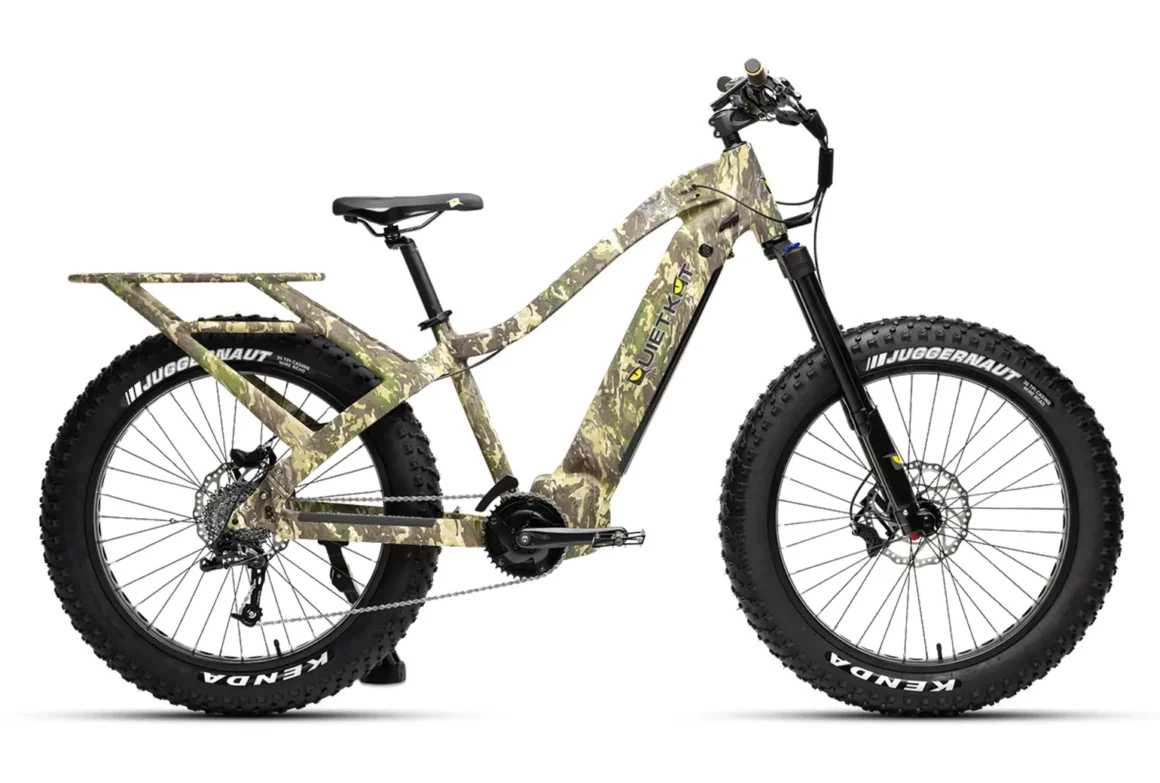
Apex Pro
What We Like
- Incredibly powerful 1,000W motor
- Solid frame and 4.5" tires
- 100-lb rear carrying rack
- Suitable for all terrains
- Top-tier hunting bike
What We Don't Like
- Extremely heavy weight
- Heavy use of throttle shortens battery life
Overview
The Quietkat Apex Pro packs the brute force to climb any inclines you encounter, even with your day’s catch on the back. The Apex Pro is among the most competitive hunting electric bikes out there, traveling almost silently and quickly across most terrains.
Its 4.5” fat tires grip sand, mud, and snow, while the 1,000W power of the Bafang motor can easily take you — and your gear — up most slopes. Another great element of the Apex Pro is the 100-lb payload capacity of the integrated rear rack. You can also add accessories like a trailer and front basket, extending your carry load.
Keep in mind, though, that the bike itself weighs about 70 lbs. Then add to that your own weight, plus your catch and gear. The 1,000W motor does its job, but it can quickly eat away at the batter and leave you with just a 20-mile range on the throttle.
Bottom Line
The Quietkat Apex Pro is a beast of an e-bike, perfect for hunting and wilderness adventures. Just make sure to pack an extra battery, as it might not last for the duration of your trip.
QuietKat Ranger
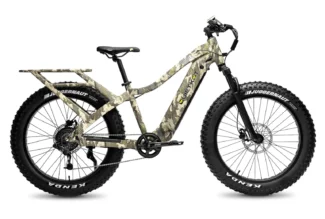
The Quietkat Ranger is very similar to the Apex Pro model but with a slightly lower price. It comes with a 750W or 1000W motor, both offering quick acceleration uphill support. This version weighs about five pounds less than the Apex Pro and includes 4″-4.5″ tires, depending on the size.
While QuietKat claims the range is longer than the Apex Pro at 38 miles, that’s unrealistic on rough terrain. You can expect closer to 14-20 miles on backwood terrain.
Best Step-Through E-Bike
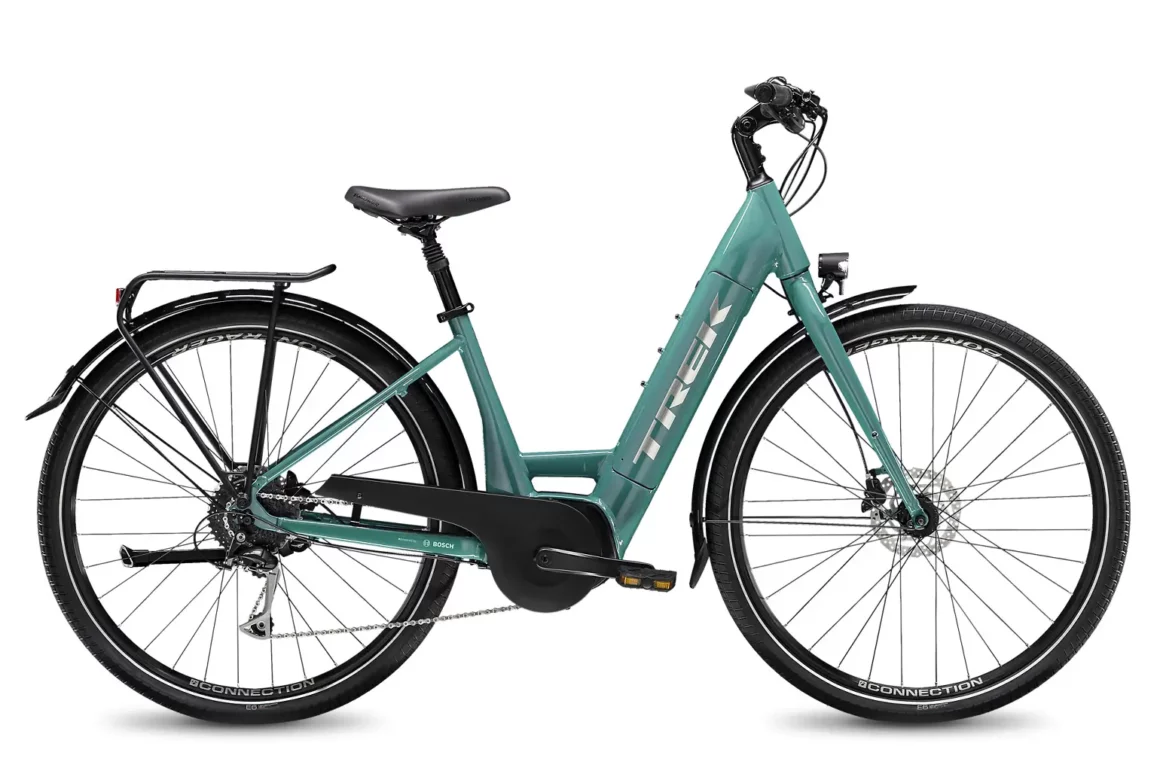
Trek Verve+ 3 Lowstep
What We Like
- Mid-range price
- 50 Nm of torque
- Durable Bontrager E6 Hard-Case Lite tires
- Attractive frame shape and color options
- Realistic 40-mile range
What We Don't Like
- Might be nice to have a throttle at certain times
Overview
The Trek Verve+ 3 Lowstep is a great-looking, mid-priced electric bike that’s easy to ride both on city streets and countryside roads. Despite its 250W motor, this e-bike offers a very respectable 50 Nm of torque that will make climbing hills seem easy.
Relatively light and agile, this is a straightforward electric bike to ride. The 300-lb load capacity also means you can use the bike to carry your gear to work or complete the week’s grocery shopping.
Keep in mind that the Verve+ 3 Lowstep is a Class 1 bike, meaning it lacks a throttle and only reaches 20 mph. The motor should be enough to make up for the lack of throttle, but you might need to find a different model if you need a faster e-bike.
Bottom Line
The Trek Verve+ 3 Lowstep is an affordable, easy-to-use e-bike that works for commuting and touring alike. Its versatility and powerful torque compensate for the lower maximum speed, making this a competitive low-step bike.
Lectric XP Step-Thru 3.0
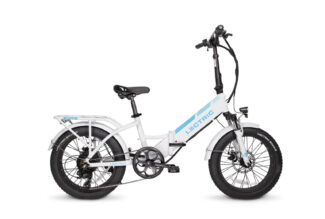
We already ranked the Lectric XP Step-Thru 3.0 as the best fat-tire bike, but it’s worth mentioning again in the step-through category. While an all-around quality bike, it comes up just a tad short compared to the Trek Verve+ 3.
The style is a bit less streamlined, and you might need to put in a bit more maintenance with the chain and cassette pedal powertrain. However, we’re really splitting hairs here. The XP Step-Thru 3.0 has an impressive 500W motor and 65-mile range that make it a (very) close second choice.
Best E-Bike for Seniors
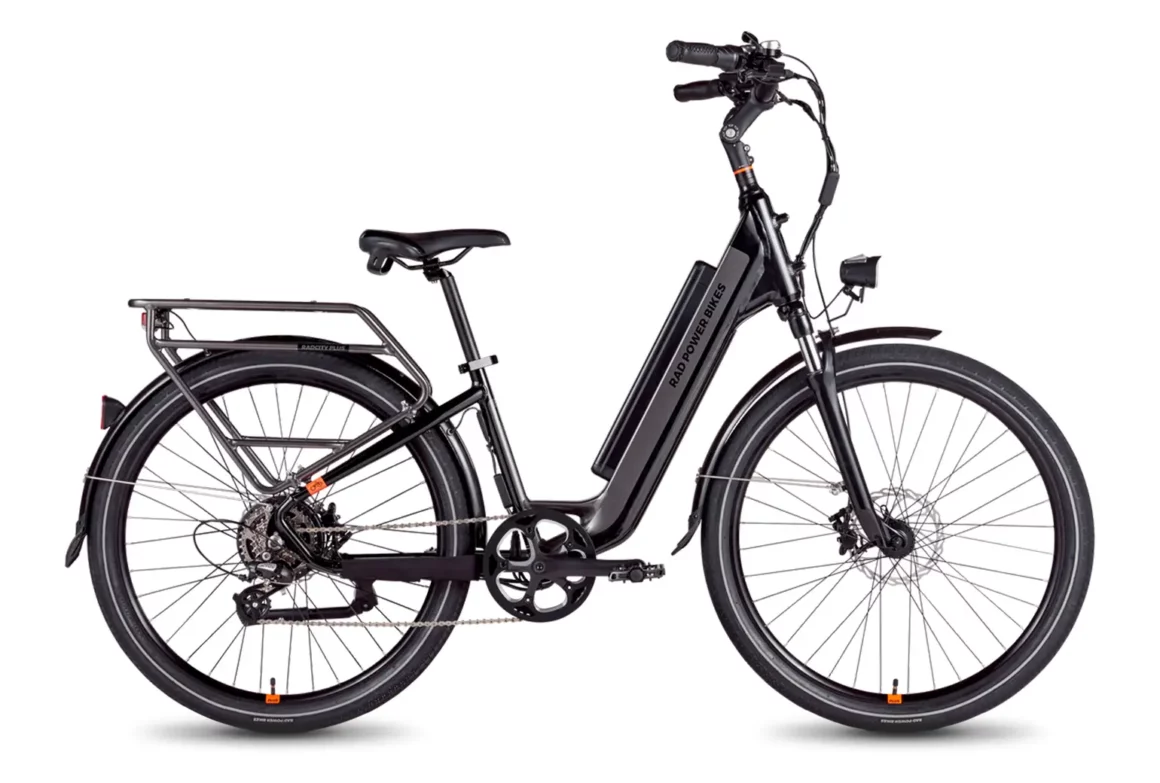
Rad Power RadCity 5 Plus
What We Like
- Step-through frame for easy mounting
- 80 Nm of torque
- Option of using the throttle
- Large 27.5" wheels
- Realistic 40-mile range
What We Don't Like
- 20-mile range on throttle alone
- Fairly heavy
Overview
At just around $2,000, the RadCity 5 Plus is an affordable e-bike that will quickly have you making excuses to get out and ride. No doctor would argue with that!
The reason this is our top pick for seniors is that it has a step-through frame for easy mounting and dismounting, plus a powerful motor with 80 Nm of torque that can get you up those tricky hills. It also has a throttle for when you don’t want to pedal anymore. Just keep in mind that using only the throttle limits the range to about 20 miles.
Other attractive features include a rear rack to carry your groceries (up to 275 lbs of total cargo), as well as a sprung suspension fork and large wheels for comfort. The only major downside is the bike’s weight, totaling 64 lbs without cargo or rider. However, the battery and motor make up for their added weight, so you won’t notice any heaviness while riding.
Bottom Line
The RadCity 5 Plus is both affordable and easy to ride, making any city or town ride easily manageable for senior riders. We think the weight is probably worth it for the power that the motor and battery deliver.
Rad Power RadTrike
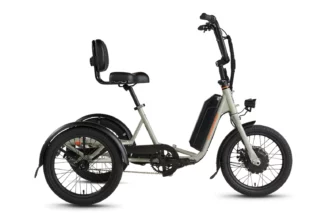
For seniors with limited mobility, the RadTrike might be a better option. While it weighs much more than the RadCity 5 Plus (80 lbs total), it has three wheels for added support and a wide, comfortable saddle.
It only reaches 14 mph, but trikes usually aren’t built for speed. Instead, this e-bike offers an increased capacity of 400 lbs and the ability to fold down for storage.
Best E-Bike for Kids
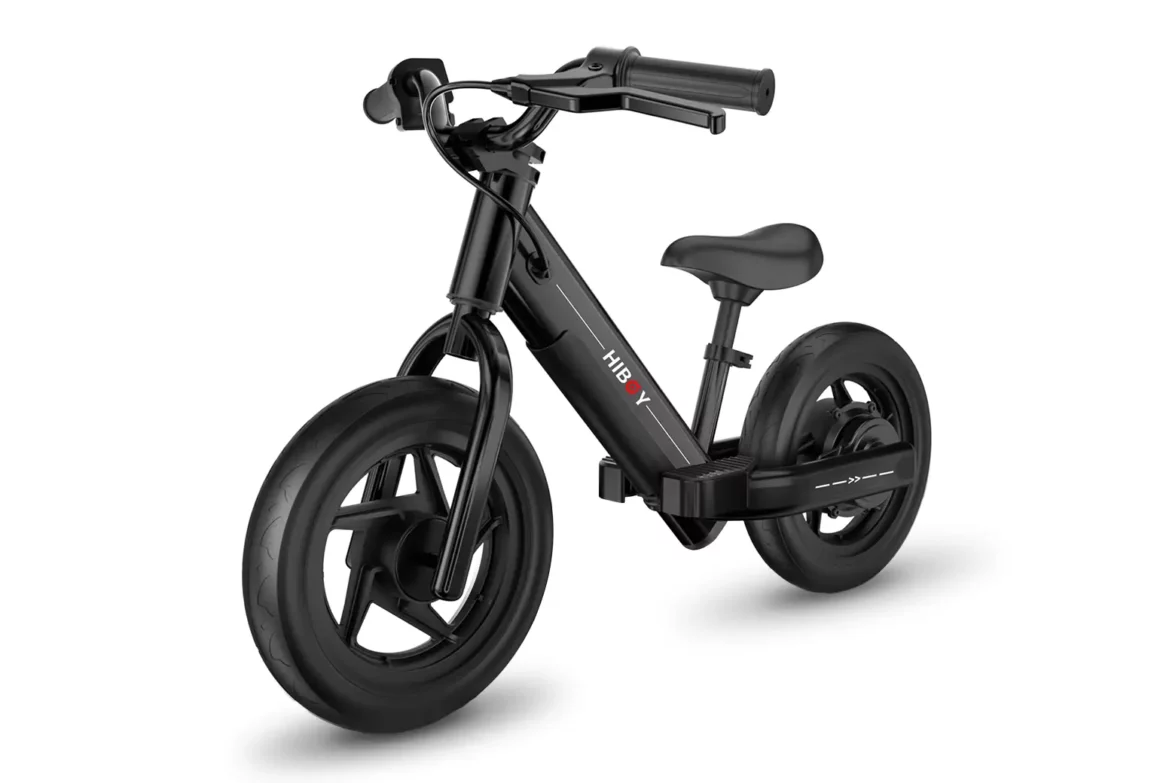
Hiboy BK1
What We Like
- Fun, new way to teach kids to ride a bike
- Balance bike with a motor (no pedals)
- Anti-slip handles
- Affordable price
- Adjustable height
What We Don't Like
- Speed might be a lot for a young child
- 50-minute use time
Overview
Forget training wheels. Pedal-free balance bikes are a fun way to teach kids to ride a bike — and now they’re available with a motor in models like the Hiboy BK1. This mini e-bike is suitable for kids 2-6 (up to 77 lbs) and helps teach them independent riding. Plus, we can’t complain about the $400 price since non-motorized balance bikes can cost over $200.
The 100W battery is powerful — but not too powerful. Little riders can reach a maximum speed of 9 mph, so mom and dad, make sure you can keep up! With anti-slip handles and an adjustable seat, this e-bike is built to last for years and potentially multiple siblings.
The only thing to keep in mind is the short 6-mile range. This translates to about 50 minutes of use, which might not be long enough for your little speedster (or maybe it’s more than enough for you trying to keep up with them!).
Bottom Line
The Hiboy BK1 is a sturdy motorized balance bike that gives just enough speed for kids to get a taste of what it’s like to ride a real motorbike. Just make sure you’re up to chasing them down at 9 mph!
Woom UP 6
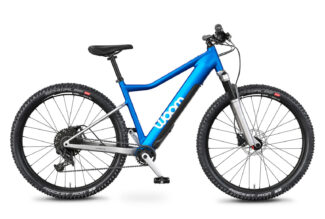
The Woom Up 6 is an equally great bike for kids, but it’s more geared toward older kids (10-14) ready to get into mountain biking. This lightweight bike has a 250W motor with a 20-mile range, perfect for a first eMTB. You can even remove the Fazua Evation motor and batter to convert it into a traditional mountain bike.
What to Know Before You Buy
If you’re new to the e-bike scene, welcome! We get that it can feel a bit overwhelming with so many electric bikes for sale, and that’s why we’ve put together a quick buyer’s guide to help you choose the best e-bike for you. Here are some critical points to consider:
Use Case
- Match your e-bike type to your intended use (e.g., commuting vs. off-roading)
- Calculate daily commute or trail mileage to choose a bike with adequate range
Brand Name Components
- Choose reputable brands for motors, batteries, and brakes
- Local e-bike shops can more easily service your bike
Price
- Budget based on your intended use and preferences
- High-performance options are available at higher prices but are unnecessary for all – good e-bikes don’t have to cost a fortune
And last but not least, you need to consider the class of your e-bike. Due to the increasing popularity of e-bikes and growing questions such as, ‘Are e-bikes the same as traditional bikes?’ and ‘Can you ride them in the same places?’, there’s a need for regulation to help answer and align with these questions.
PeopleForBikes helped develop a three-class system to categorize e-bikes based on their capabilities and features. Get this gist here:
Class 1 E-Bikes
Feature only a pedal assist system (PAS), without a throttle, and have a maximum speed limit of 20 mph
Class 2 E-Bikes
Similar to Class 1, but comes with a throttle in addition to PAS and also has a top speed of 20 mph
Class 3 E-Bikes
Include PAS and have a higher maximum speed, up to 28 mph
Classless
Other e-bikes that don’t fall under any class in the system
Of course, there’s a bit more to it. Discover more about e-bike classes and U.S. laws and regulations to determine which class is right for you and where you’ll be riding frequently.
Choose Your Perfect E-Bike
The electric bike market increasingly mirrors the wide range of traditional bikes available, from road and racing e-bikes to gravel, hybrid, and mountain e-bikes. So many options can make selecting the perfect e-bike challenging — but that’s why we made this guide to the best e-bikes of 2024.
Hopefully, the insights here have given you a better idea of your ideal electric bike. Remember to consider where and when you plan to ride, how often you intend to use the bike, and critical features like top speed, weight, and range before hitting the buy button.
Discover more of the types of e-bikes available and learn about their general benefits to your everyday life. For more guidance on finding the right e-bike, discover some of our additional reads to aid you in choosing the e-bike just for you.


